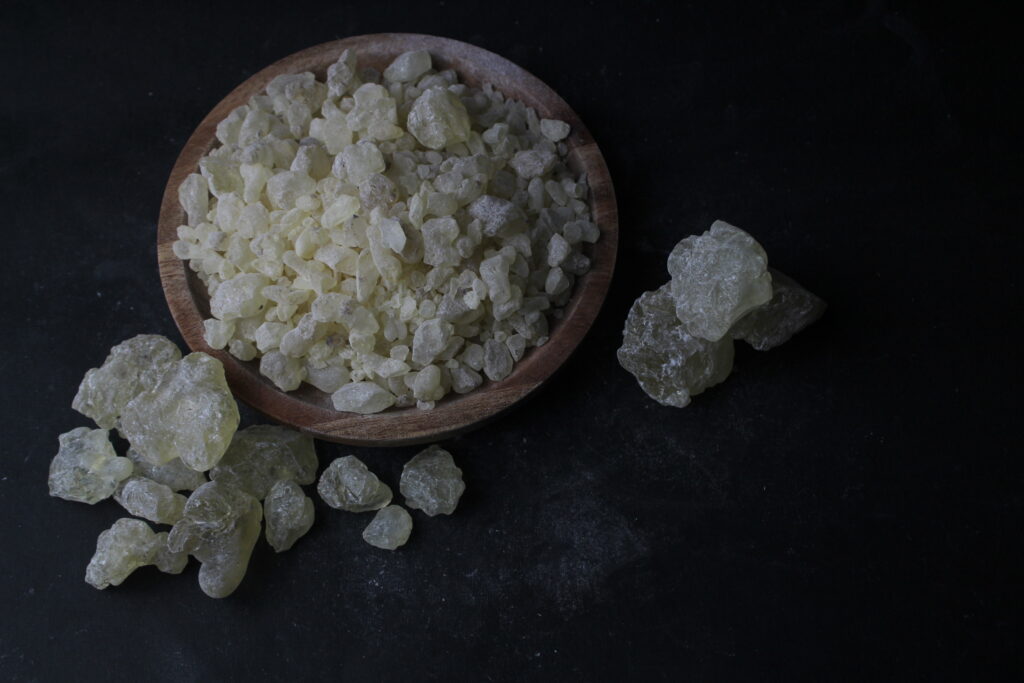Gum Damar is harvested through a process that involves careful tapping of trees from the Dipterocarpaceae family, primarily in the tropical forests of Southeast Asia, particularly in Indonesia. Here’s a step-by-step breakdown of how the harvesting process typically works:
1. Tree Selection
Harvesters identify mature trees that are suitable for tapping, usually species from the Shorea genus (such as Shorea javanica or Shorea wiesneri). These trees are typically found in dense tropical forests and must be old enough to produce high-quality resin.
2. Tapping the Tree
To collect the resin, the harvester makes controlled incisions or cuts into the tree’s bark. The cuts penetrate through the bark to the cambium layer (the part of the tree responsible for growth). The tree responds to these cuts by exuding resin to protect the wounded area. The resin begins as a liquid but solidifies when exposed to air.
3. Resin Collection
The resin begins to flow out of the incisions as a sticky liquid. Over time, it hardens into a solid, crystalline form on the surface of the tree. Harvesters typically wait a few weeks to allow the resin to accumulate before collecting it. Once enough resin has formed, it is scraped off the tree.

4. Drying and Processing
After collection, the raw resin may undergo a cleaning process to remove impurities like bark or dirt. The resin is typically sun-dried to further harden it. Depending on the intended use, it may be graded by size and quality. Higher-quality resin, which is clearer and purer, is often used for varnishes and fine art, while lower grades may be used in industrial applications.
5. Sustainable Harvesting
In well-managed forests, sustainable harvesting practices are crucial. The process of tapping trees is done carefully to avoid causing permanent damage. Resin-tapping is typically non-invasive, allowing the tree to heal naturally and continue producing resin for many years. Trees can be tapped multiple times over their lifespan, making Gum Damar a renewable resource when harvested responsibly.
6. Community Involvement
In countries like Indonesia, the harvesting of Gum Damar is an important economic activity for many local communities. Farmers and harvesters often practice traditional methods that have been passed down through generations, helping to maintain a sustainable cycle of resin production while preserving the forests in which the trees grow.
Environmental Benefits
Responsible harvesting ensures that the tree continues to thrive while providing an ongoing source of resin. Unlike deforestation practices, tapping trees for resin does not involve cutting down the tree, allowing both the forest and the local ecosystems to remain intact.
In short, the process of harvesting Gum Damar is an age-old, sustainable practice that, when done responsibly, supports both the local environment and the livelihoods of communities who rely on these natural resources.
Contact Us :
Telp : +6285648688722
Address : Jl.Ir Soekarno, No.122, Dadaprejo, Junrejo, Kota Batu 695323